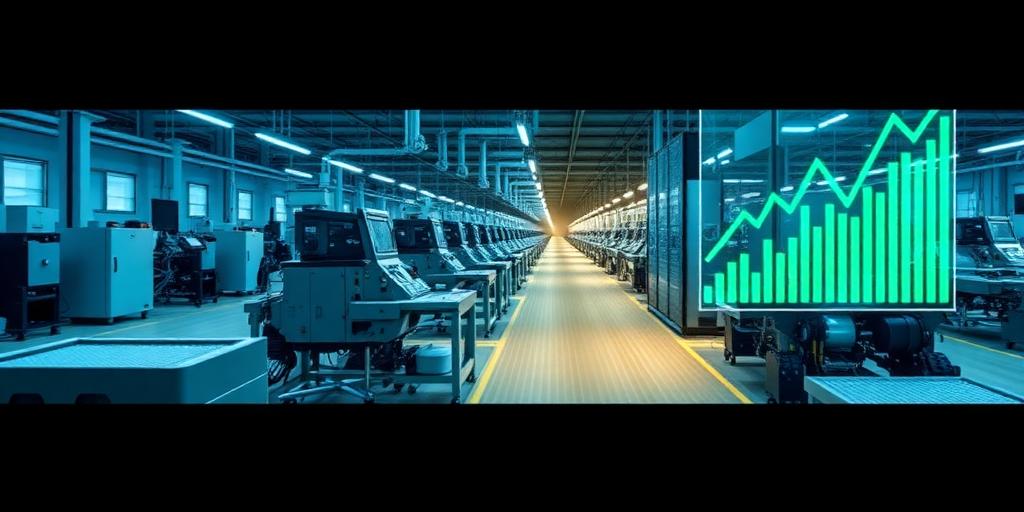Production Linked Incentive (PLI) Schemes: A Deep Dive into India's Industrial Growth Strategy for 2025
India's Production Linked Incentive (PLI) schemes represent a cornerstone of the nation's strategy to enhance domestic manufacturing capabilities and attract significant investment across key sectors. Launched with the aim of transforming India into a global manufacturing hub, these schemes offer financial incentives to companies based on incremental sales resulting from domestic production. As we approach 2025, it is crucial to understand the nuances, impacts, and future trajectory of these initiatives.
Understanding the PLI Scheme
The PLI scheme is designed to encourage increased production and exports by providing incentives calculated on the basis of a company's incremental production. This approach not only aims to boost local manufacturing but also to make Indian industries more competitive on a global scale. The scheme spans across various sectors, reflecting a broad strategy to bolster diverse segments of the economy.
Key Sectors Under the PLI Scheme
The government has extended the PLI scheme to numerous sectors critical to India's economic growth. Some of the prominent sectors include:
- Automobile and Auto Components: Enhancing the automotive industry's manufacturing capabilities.
- Pharmaceuticals: Encouraging the production of high-value drugs and reducing import dependence.
- Telecom and Networking Products: Promoting the development of indigenous telecom equipment.
- Textiles: Incentivizing the production of man-made fibers and technical textiles.
- White Goods (ACs and LEDs): Boosting the manufacturing of energy-efficient appliances.
- Specialty Steel: Promoting the production of high-grade steel.
- Food Processing: Supporting the value addition in the agricultural sector.
- Drones and Drone Components: Fostering the growth of the drone manufacturing ecosystem.
Each sector-specific scheme is tailored to meet the unique challenges and opportunities present within that industry, ensuring that the incentives are effective and aligned with the sector's growth objectives.
Impact and Achievements
Since their inception, the PLI schemes have demonstrated a promising impact on the Indian manufacturing landscape. Key achievements include:
- Increased Investment: The schemes have attracted significant domestic and foreign investment, leading to the expansion of manufacturing facilities and the creation of new jobs.
- Enhanced Production: Many sectors have witnessed a notable increase in production, contributing to the country's GDP growth and reducing reliance on imports.
- Export Promotion: By incentivizing production, the schemes have indirectly boosted exports, helping to improve India's trade balance.
- Technological Advancement: Companies are investing in research and development to enhance their production processes, leading to technological advancements across various sectors.
Challenges and the Way Forward
Despite the successes, the PLI schemes face certain challenges that need to be addressed to maximize their effectiveness. These include:
- Implementation Hurdles: Streamlining the application and disbursement processes to ensure timely access to incentives.
- Global Competition: Ensuring that the incentives are competitive enough to attract investment in the face of global competition.
- Supply Chain Bottlenecks: Addressing supply chain issues to ensure the smooth flow of raw materials and components.
- Monitoring and Evaluation: Strengthening the monitoring and evaluation mechanisms to assess the impact of the schemes accurately.
Moving forward, it is essential for the government to continue refining the PLI schemes based on feedback from industry stakeholders and ongoing evaluations. This includes simplifying the compliance requirements, providing additional support for small and medium enterprises (SMEs), and promoting greater collaboration between industry, academia, and research institutions.
Conclusion
The Production Linked Incentive (PLI) schemes represent a bold and ambitious initiative by the Indian government to transform the country into a global manufacturing powerhouse. By providing targeted incentives to key sectors, these schemes are driving investment, boosting production, and promoting exports. As we look ahead to 2025 and beyond, continued commitment to refining and expanding the PLI schemes will be crucial in realizing India's vision of becoming a self-reliant and competitive manufacturing hub.









